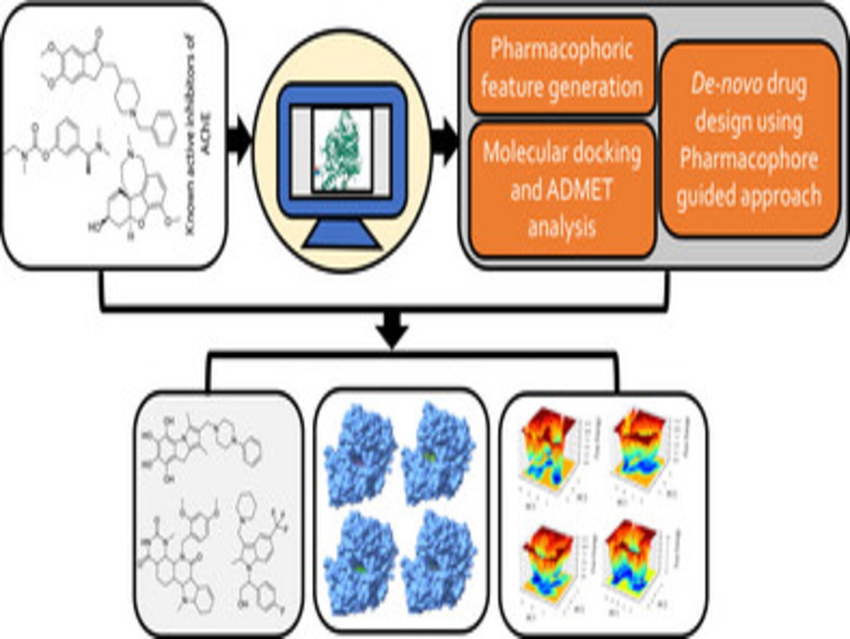Alzheimer’s disease (AD) is a major neurodegenerative disorder with limited treatment options. One of the key issues in AD is the breakdown of acetylcholine, a neurotransmitter essential for memory and learning. This happens due to the action of an enzyme called acetylcholinesterase (AChE). Inhibiting AChE can help maintain acetylcholine levels and slow cognitive decline. However, current AChE inhibitors often have side effects and limited effectiveness. The study aims to discover new, more selective AChE inhibitors using advanced computational tools.
The study was conducted by a multidisciplinary team of scientists from various research groups in Colombia, including:
The researchers, Md Ataul Islam, SilicoScientia Private Limited, Bengaluru, India and colleagues, identified 18 promising new molecules that could inhibit AChE. Among them, six compounds showed strong inhibitory activity in the in vitro model, even better than the standard drug galantamine. These molecules could serve as potential drug candidates for treating AD.
Herein, the research approach and chemistry involved three models: (1) the pharmacophore model, which they built a detailed model of the AChE enzyme’s active site using known inhibitors. This model captured key interactions like π-cation and π-π stacking with amino acids such as Trp-86, Tyr-341, Tyr-337, Tyr-124, and Tyr-72; (2) machine learning integration, where a deep learning model was trained to predict which molecules from a large database (ZINC) would best fit the pharmacophore features; (3) virtual screening & docking, where over 4,600 known AChE inhibitors were clustered and docked into the enzyme’s active site using induced-fit docking. Molecular dynamics simulations (50 ns) were run to refine the protein-ligand interactions; (4) experimental validation, where nine top-ranked molecules were synthesized and tested in vitro. Compounds like P-1894047 and P-2652815 showed IC₅₀ values equal to or better than galantamine, indicating strong inhibition. Some compounds failed due to solubility issues, highlighting the importance of experimental follow-up.
This study shows that combining AI, pharmacophore modelling, and lab testing can speed up drug discovery. The identified compounds could lead to safer and more effective treatments for AD. Future work will likely focus on optimizing these molecules, improving their drug-like properties, and testing them in animal models.
- Identification of Acetylcholinesterase Inhibitors Through a Pharmacophore-Guided Deep Learning Approach for Therapeutic Applications in Alzheimer’s Disease,
Vikramsinh Sardarsinh Suryawanshi, Md Lutful Islam, Gaber E. Eldesoky, Pritee Chunarkar Patil, Shovonlal Bhowmick, Md Ataul Islam
ChemSelect, 2025
https://doi.org/10.1002/slct.202500492




